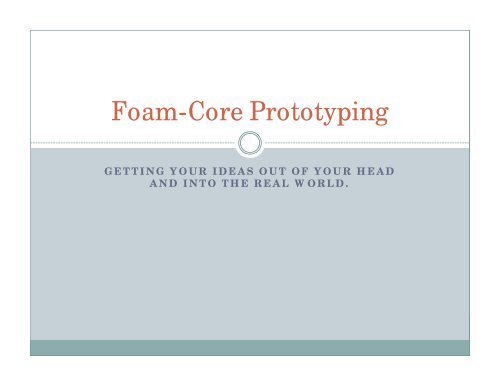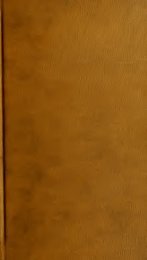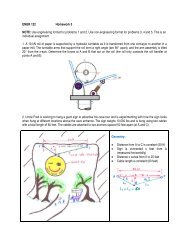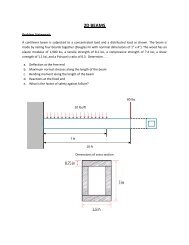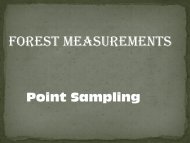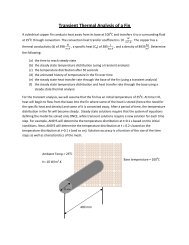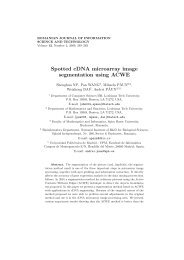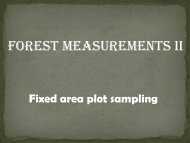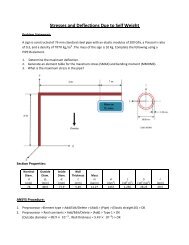Foam Core Prototyping
Foam Core Prototyping
Foam Core Prototyping
Create successful ePaper yourself
Turn your PDF publications into a flip-book with our unique Google optimized e-Paper software.
<strong>Foam</strong>-<strong>Core</strong> <strong>Prototyping</strong>GETTING YOUR IDEAS OUT OF YOUR HEADAND INTO THE REAL WORLD.
<strong>Prototyping</strong>• It is necessary to be able to convey yyour ideas toothers effectively.• A picture is worth a 1000 words . . .• . . ., but a three-dimensional prototype is most oftenneeded.• A prototype:◦ is inexpensive◦ is quickly made (in comparison to the final product)◦ represents the proposed product or device
Types of Prototypes• There are several types of prototypes:◦ Concept drawings (simple sketches to get the ball rolling)◦ Virtual computer simulations (like Solid Edge)◦ Mathematical models (MathCAD, MatLab and Excel)◦ Clay models (often seen in the automotive industry)◦ <strong>Foam</strong>-core (like the one you are about to make)• Some prototypes are fully functional, …• … but many are just spatial representations.
<strong>Foam</strong>-<strong>Core</strong>• <strong>Foam</strong>-core (or <strong>Foam</strong> Board) is one material that canbe used for quickly prototyping your ideas.• <strong>Foam</strong>-core is a composite material consisting of:◦ An outer layer of card stock◦ And inner layer of foam (like Styrofoam)◦ And another layer of card stock
Tools for Working with <strong>Foam</strong>-<strong>Core</strong>• Only a few basic tools are needed for <strong>Foam</strong>-<strong>Core</strong>:◦ Cutting mat (so you don’t cut up the table top!)◦ Cutting knife (Exacto, or box cutter) with a sharp blade◦ Metal ruler (for measuring and making straight cuts)◦ Pencil or a pen (for marking the cut lines)◦ Tape (clear packing tape works well)◦ Hot glue can be used also, but not required (low-temperature!)
Getting Started with <strong>Foam</strong>-<strong>Core</strong>• Make sure you have a good, solid surface to work onand BE SURE TO USE THE CUTTING MAT!• Let’s start with just cutting a straight line• Since foam-core has three layers, it is usually best tomake three cuts:◦ Cut through the top layer of card stock◦ Cut through the layer of foam◦ Cut through the bottom layer of card stock• If you try to cut through all three layers at once, youwill end up with a jagged mess!
Cutting a Line• First, measure and mark the line.◦ You may want to start at the 1” mark on your ruler, as the scaleon some rulers does not go all the way to the end.• Be sure your fingers are out of the way!• Make the THREE cuts.
Types of Corners• At some point you are going gto want to join yourfoam-core pieces together – there are at least threetypes of corners that you can make:◦ Overlapped◦ Mitered◦ RabbetedOverlappedMiteredRabbeted
Overlap Corner• The overlap pjoint is the simplest corner to make.• Simply cut the two pieces and tape them together tocreate the corner.• It helps to lay the tape down (sticky side up) on yourwork surface and place the first piece of foam-coreon top of the tape.
Miter Corner• Mitering a corner makes for a nice clean outside, asthere is no break in the material.• Cut a V-shaped groove in the foam-core.• The angle of the “V” determines the angle of theresulting corner.
Rabbeted Corner• The rabbeted corner gives a nicer looking cornerthan the overlap, and is easier than making themitered corner.• Cut through one layer of cardstock, and the foamcore,but not through the other layer of cardstock.Only cut through twolayers of the foam-core.Cut at 90-degrees fromyour first cut to form therabbet.A rabbet!


